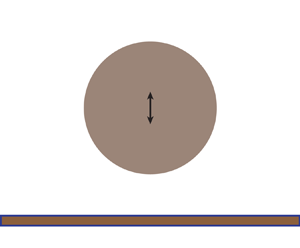Article contents
Unsteady drag force on an immersed sphere oscillating near a wall
Published online by Cambridge University Press: 14 December 2023
Abstract

The unsteady hydrodynamic drag exerted on an oscillating sphere near a planar wall is addressed experimentally, theoretically and numerically. The experiments are performed by using colloidal-probe atomic force microscopy in thermal noise mode. The resonance frequencies and quality factors are extracted from the measurement of the power spectrum density of the probe oscillation for a broad range of gap distances and Womersley numbers. The shift in the resonance frequency of the colloidal probe as the probe goes close to a solid wall infers the wall-induced variations of the effective mass of the probe. Interestingly, a crossover from a positive to a negative shift is observed as the Womersley number increases. In order to rationalize the results, the confined unsteady Stokes equation is solved numerically using a finite-element method, as well as asymptotic calculations. The in-phase and out-of-phase terms of the hydrodynamic drag acting on the sphere are obtained and agree well with the experimental results. All together, the experimental, theoretical and numerical results show that the hydrodynamic force felt by an immersed sphere oscillating near a wall is highly dependent on the Womersley number.
- Type
- JFM Papers
- Information
- Copyright
- © The Author(s), 2023. Published by Cambridge University Press
References
- 8
- Cited by



